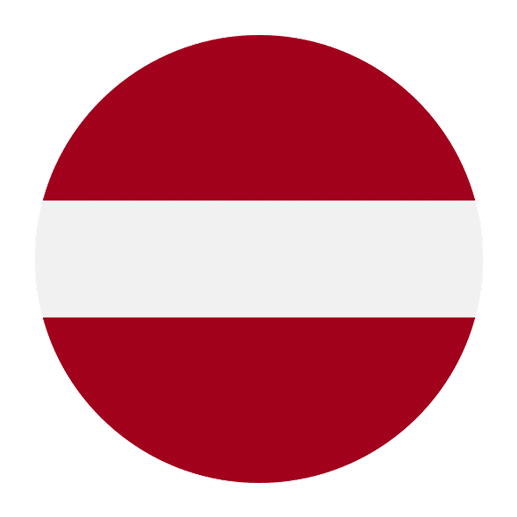Latvian, one of the Baltic languages, offers a rich tapestry of linguistic elements that can be both fascinating and challenging for language learners. Among these elements, color adjectives play a significant role, providing a glimpse into the cultural and descriptive nuances of the language. In this article, we will delve into the grammar of color adjectives in Latvian, exploring their forms, usage, and variations.
Understanding the Basics: Color Adjectives in Latvian
Color adjectives in Latvian, much like in English, describe the color of objects, people, or abstract concepts. However, Latvian color adjectives come with specific grammatical rules that learners need to understand.
Gender and Number Agreement
One of the fundamental aspects of Latvian grammar is that adjectives must agree with the nouns they modify in gender (masculine or feminine) and number (singular or plural). This agreement extends to color adjectives as well. Here are some basic color adjectives in their masculine and feminine singular forms:
– **Red**: sarkans (masculine), sarkana (feminine)
– **Blue**: zils (masculine), zila (feminine)
– **Green**: zaļš (masculine), zaļa (feminine)
– **Yellow**: dzeltens (masculine), dzeltena (feminine)
– **Black**: melns (masculine), melna (feminine)
– **White**: balts (masculine), balta (feminine)
To illustrate, let’s look at a few examples:
– **Masculine Singular**: Viņš valkā sarkanu kreklu. (He is wearing a red shirt.)
– **Feminine Singular**: Viņa valkā sarkanu kleitu. (She is wearing a red dress.)
When dealing with plural forms, the adjectives change as well:
– **Masculine Plural**: Viņi valkā sarkanus kreklus. (They are wearing red shirts.)
– **Feminine Plural**: Viņas valkā sarkanas kleitas. (They are wearing red dresses.)
Definite and Indefinite Forms
Latvian adjectives, including color adjectives, have both definite and indefinite forms. The indefinite form is used when the adjective is not referring to a specific object or when the noun does not have a definite article. Conversely, the definite form is used when referring to a specific object.
– **Indefinite**: zaļš ābols (a green apple)
– **Definite**: zaļais ābols (the green apple)
Here’s how the definite forms look for some common colors:
– **Red**: sarkanais (masculine), sarkanā (feminine)
– **Blue**: zilais (masculine), zilā (feminine)
– **Green**: zaļais (masculine), zaļā (feminine)
– **Yellow**: dzeltenais (masculine), dzeltenā (feminine)
In practice:
– **Indefinite**: Viņai ir balts suns. (She has a white dog.)
– **Definite**: Baltais suns ir viņas mīlulis. (The white dog is her pet.)
Forming Comparative and Superlative Degrees
Like in English, Latvian color adjectives can be used in comparative and superlative degrees to compare and contrast different objects.
Comparative Form
To form the comparative degree of color adjectives, Latvian typically adds the suffix -āk to the base form of the adjective.
– **Red**: sarkanāks (redder)
– **Blue**: zilāks (bluer)
– **Green**: zaļāks (greener)
Examples in sentences:
– Šis ābols ir sarkanāks nekā tas ābols. (This apple is redder than that apple.)
– Viņas kleita ir zilāka nekā mana. (Her dress is bluer than mine.)
Superlative Form
For the superlative degree, Latvian generally uses the prefix vis- before the comparative form of the adjective.
– **Red**: vis-sarkanākais (the reddest)
– **Blue**: vis-zilākais (the bluest)
– **Green**: vis-zaļākais (the greenest)
Examples in sentences:
– Šis ir vis-sarkanākais ābols, ko esmu redzējis. (This is the reddest apple I have ever seen.)
– Tā ir vis-zaļākā pļava ciematā. (That is the greenest meadow in the village.)
Color Adjectives in Context: Idiomatic Expressions
Latvian, like many languages, uses color adjectives in idiomatic expressions that can add richness and depth to your language skills. Here are a few examples:
– **Red**: būt sarkanam kā biete (to be red as a beet) – used to describe someone who is blushing.
– **Blue**: justies zils (to feel blue) – to feel sad or depressed.
– **Green**: zaļš kā gurķis (green as a cucumber) – to be fresh or inexperienced.
Understanding these expressions can help you sound more natural and fluent in Latvian.
Special Considerations and Exceptions
While the rules discussed above cover most situations, there are always exceptions and special considerations in any language.
Compound Colors
When describing colors that are a mix of two basic colors, Latvian often forms compound adjectives. For example:
– **Light Blue**: gaiši zils (literally “light blue”)
– **Dark Green**: tumši zaļš (literally “dark green”)
These adjectives follow the same agreement rules as basic color adjectives:
– **Feminine Singular**: gaiši zila kleita (a light blue dress)
– **Masculine Plural**: tumši zaļi krekli (dark green shirts)
Borrowed and Rare Colors
Latvian, like many languages, has borrowed some color names from other languages, especially for more exotic or less commonly referenced colors. These borrowed terms often do not follow the same inflection patterns and may remain in their borrowed form:
– **Turquoise**: tirkīza
– **Beige**: bēšs (though it also has an inflected form: bēša, bēši, etc.)
It is important to note these exceptions and be aware of them as you expand your vocabulary.
Practical Tips for Learning Latvian Color Adjectives
To effectively learn and use color adjectives in Latvian, consider the following tips:
Practice with Real-life Objects
Associating colors with objects around you can help reinforce your learning. Label items in your home with their Latvian color adjectives and practice using them in sentences.
Use Flashcards
Create flashcards with the color adjective on one side and an image or the English translation on the other. Regularly review these flashcards to enhance your memory.
Engage in Conversations
Practice speaking with native speakers or fellow learners. Use color adjectives in your conversations to describe objects, clothing, and surroundings. This will help you become more comfortable with their usage.
Watch and Listen to Latvian Media
Expose yourself to Latvian media, such as TV shows, movies, and music. Pay attention to how color adjectives are used in context. This will help you understand their practical application and improve your listening skills.
Practice Writing
Write short paragraphs or essays describing scenes, objects, or experiences using color adjectives. This will help you practice their forms and agreements in a structured way.
Conclusion
Color adjectives in Latvian are an essential part of the language that require attention to gender, number, and definite/indefinite forms. By understanding these rules and practicing their application, you will enhance your descriptive abilities and overall fluency in Latvian. Remember to engage with the language through various mediums and practice regularly to reinforce your learning. With dedication and practice, you will master the use of color adjectives and enrich your Latvian language skills.

